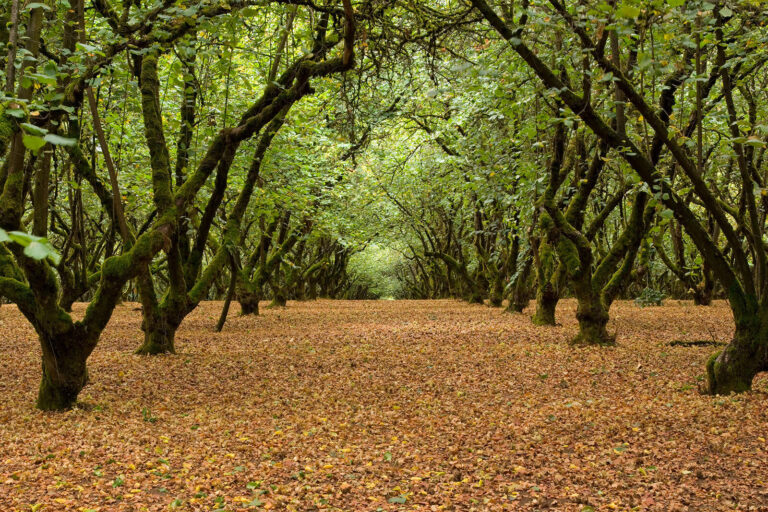Introduction
The corylus avellana, or hazelnut tree, is a flash tree that yields the succulent and unstable hazelnut. This tree is prized for its seductive appearance, ecological advantages, and succulent nuts. We shall examine the hazelnut tree’s history, civilization, applications, and advantages in this extensive companion, which will provide both beginners and experts with a thorough understanding.
History of the Hazelnut Tree
Ancient Origins
The hazelnut tree has a long and varied history that dates back thousands of times. There’s substantiation to suggest that hazelnuts were a major source of food for neolithic Asian and European populations. Archaeological substantiation suggests that hazelnut civilization began as beforehand as 9000 BCE, during the Mesolithic period.
Cultural Significance
Hazelnuts have had artistic and emblematic significance in a variety of societies throughout history. They were regarded as a source of alleviation and wisdom in ancient Rome and Greece. The sacred salmon that ate hazelnuts that had fallen into the swash was constantly linked to the hazelnut in Celtic tradition, which was associated with knowledge and lyrical alleviation.
Cultivation of Hazelnut Trees
Ideal Growing Conditions
The well- drained soils of temperate climates are ideal for hazelnut trees. They like to live in places with warm summers and mild layoffs. The ideal soil pH for hazelnut trees is between 6.0 and 7.0, which is between slightly acidic and neutral. Although they can live in a variety of soils, they thrive in earthy soils with a lot of organic matter.
Planting and Propagation
Seeds, slices, and grafting are all styles of propagation for hazelnut trees. generally, planting takes place in the fall or early spring. To insure proper growth and air rotation, it’s essential to establish a 15 to 20- bottom distance between trees when planting. The junking of weeds and the retention of humidity are both backed by mulching the tree’s base.
Care and Maintenance
Watering should be done on a regular base, especially during the first many times of growth. Deep watering is salutary for hazelnut trees because it encourages the development of deep roots. also, pruning is necessary to ameliorate air rotation, remove diseased or damaged branches, and maintain the shape of the tree. A balanced, slow- release toxin can encourage healthy growth and the product of nuts.
Hazelnut Tree Varieties
Common Varieties
The American hazelnut( Corylus americana), the European hazelnut( Corylus avellana), and cold-blooded kinds are among the tree kinds grown for their nuts. Nut size, flavor, and resistance to conditions are just a many of the distinctive characteristics that distinguish each variety.
Disease-Resistant Varieties
To combat common hazelnut tree conditions like Eastern filbert scar, breeding programs have developed kinds that are resistant to complaint. Because of their resistance to scar and other conditions, kinds like” Jefferson,”” Eta,” and” Theta” are popular choices for both marketable farmers and home gardeners.
Uses of Hazelnuts
Culinary Applications
Because of their rich, nutty flavor and rigidity to baking and cuisine, hazelnuts are largely prized. They’re comestible raw, can be roasted, or can be base into flour. multitudinous sweets, including pralines, chocolate truffles, and the well- known spread Nutella, contain hazelnuts. They’re also used in savory dishes, giving salads, pasta, and roasted vegetables a pleasurable crunch.
Nutritional Benefits
Hazelnuts have numerous health benefits and are a nutritional hustler. They contain a lot of healthy fats, especially monounsaturated fats, which are good for your heart. Vitamin E, magnesium, and bull are just a numerous of the minerals and vitamins set up in hazelnuts. Their high fiber content makes it easier to digest and makes you feel full.
Ecological Benefits of Hazelnut Trees
Habitat for Wildlife
For a variety of wildlife species, hazelnut trees give precious niche and food sources. Squirrels, catcalls, and other small mammals enjoy eating the nuts. catcalls can find sanctum and places to nest in the thick leafage, and flowers attract pollinators like notions.
Soil Health and Erosion Control
Hazelnut trees’ expansive root system aids in soil stabilization and corrosion forestallment. Their roots enhance nutrient cycling and ameliorate soil structure. also, hazelnut trees play a part in precluding climate change by helping to store carbon.
Hazelnut Harvesting and Processing
Harvesting Techniques
Depending on the variety and the conditions in which they were growing, hazelnuts are generally gathered in the late summer or early fall. When the cocoons begin to dry and resolve, allowing the nuts to fall to the ground, the nuts are ready for crop. To efficiently collect the nuts, marketable farmers constantly make use of mechanical harvesters.
Post-Harvest Processing
Hazelnuts are prepared for consumption through a series of processing way following crop. This includes sorting the nuts according to size and quality, drying to lower the humidity content, drawing to get relieve of cocoons and other debris, and so on. Products like roasted nuts, nut adulation, and hazelnut oil painting are made from some hazelnuts that have been further reused.
Challenges and Solutions in Hazelnut Cultivation
Pests and Diseases
Aphids, weevils, and Eastern filbert scar are among the pests and conditions that can attack hazelnut trees. These difficulties can be lessened with integrated pest operation strategies like regular monitoring, natural control, and the use of resistant kinds.
Climate Change
The civilization of hazelnuts faces a significant trouble from climate change, which has an impact on the growing conditions and raises the liability of pests and conditions. To guarantee the product of hazelnuts for the foreseeable future, adaptable strategies, similar as opting kinds that are suitable to repel changes in the climate and employing environmentally friendly husbandry styles, are absolutely necessary.
Conclusion
The hazelnut tree is a remarkable factory with multitudinous advantages, including its succulent and nutritional nuts and benefactions to the terrain. A comprehensive appreciation of this adaptable and precious species is gained by comprehending the history, civilization styles, kinds, and operations of hazelnut trees. Hazelnut trees are still a cherished and significant element of our natural and culinary heritage, anyhow of whether they’re grown for consumption in a home theater or for use in marketable product.


